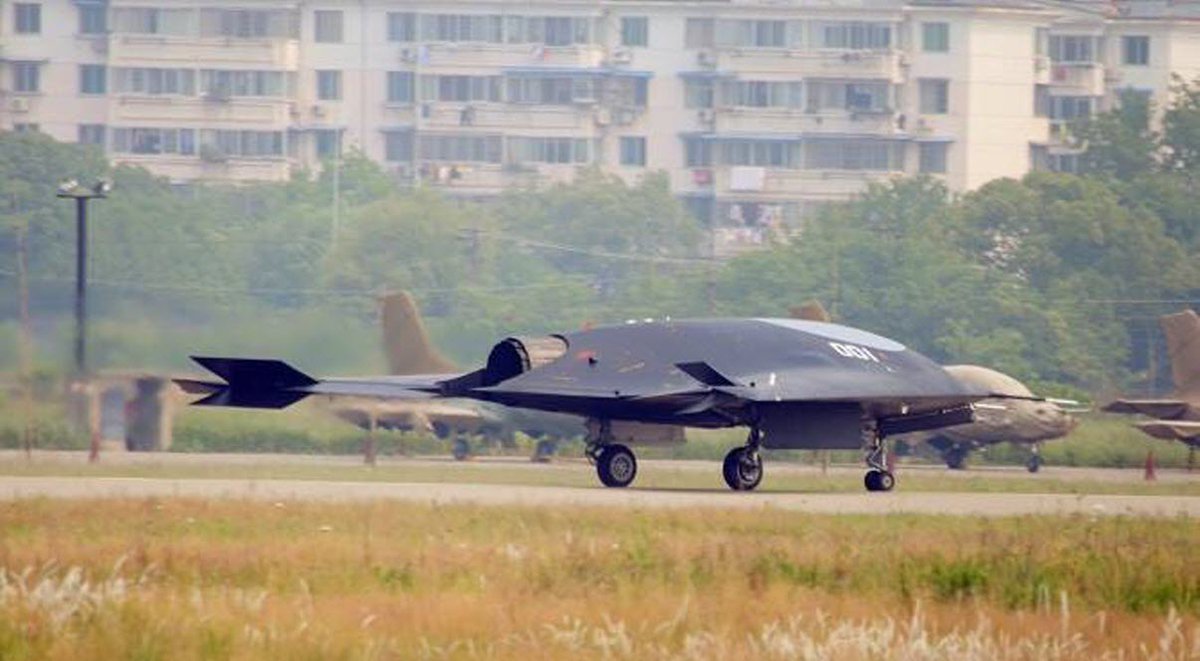Here is Kyle Mizukami take on this new UAV
I am not sure if radar can detect flying object so close to the water surface with all those clutter
China Is Building a Sea-Skimming Anti-Ship Drone
Unnamed drone can fly less than two feet above the surface of water.
MOST POPULAR
By
May 4, 2017
China is developing a new drone that uses ground effect technology to skim the surface of the ocean, allowing it to fly just eighteen inches off the water. The unmanned vehicle could be a challenging opponent for potential adversaries, some of whom would find it difficult to detect.
The drone first appeared on Chinese corners of the internet and quickly spread to Russian and western defense blogs. The drone appears to have a set of forward canards and a pair of upward swept wings. It has an air intake on top instead of the bottom, perhaps to avoid sea spray from being sucked into the engine at very low altitude. It is also painted in blue Chinese Navy camouflage.
Most modern cruise missiles are what are called "sea-skimmers," flying thirty feet or less above the surface of the water in order to avoid detection. The curvature of the Earth means sea skimming shortens the distance that enemy ship radars can detect it, giving the defender less time to shoot it down. Here's a short video about the American Harpoon anti-ship missile, which is considered a sea-skimmer.
The new unnamed drone, by comparison, is claimed to fly
. Against typical sea skimmers, a ship radar thirty feet above sea level would
. The same radar would only detect the Chinese drone at 9.48 miles. A drone flying that close to the ground won't be flying supersonic, and by appearances the UAV has a turbofan engine. Assuming a speed of 600 miles an hour, typical for subsonic anti-ship missiles, an enemy ship would have 59 seconds to react.
The drone can fly this low thanks to the
, which takes place when very low flying aircraft experience more lift and less drag due to the presence of the ground underneath. The ground blocks the trailing vortices of the wing and decreases downwash. Further evidence that the drone takes advantage of ground effect is its low-wing design, where the wing root is at the bottom of the fuselage, a common feature among ground effect vehicles.
The drone has an estimated flying time of 1.5 hours, which at 600 miles an hour would give it a 900 mile range. It has a maximum takeoff weight of 6,000 pounds and a maximum payload—likely a blast fragmentation warhead—of 2,000 pounds. That's the average size of warheads the Soviet Union fielded during the Cold War to take out American aircraft carriers—that is, if when weren't fielding nuclear warheads.
Shaanxi Y-9 medium transport.
The maritime patrol version of the aircraft is similar.
Via Wikipedia.
One possible concept of operation for the drone would be to place them in shore batteries on islands or Chinese Navy ships. A friendly manned aircraft, such as
or high altitude unmanned aerial vehicle, detects the enemy fleet and provides targeting data. Once launched, the aircraft or drone can continue to provide updated targeting data, allowing the anti-ship drones to operate with radars off. This gives them a better chance of sneaking up on the enemy, as radar is another means by which incoming missiles can be detected.
How effective would this be against the U.S. Navy? It's difficult to say, but against carrier battle groups—the drone's primary target—there are already the ingredients for an effective defense. The Navy's
extends the sensor range of carrier battle groups by using the radar onboard the
. Flying at 30,000 feet, a Hawkeye can theoretically detect the drone at 215 miles, provided it can pick it out from surface clutter such as wavetops. This increases the defender's reaction time from 59 seconds to more than 20 minutes. The E-2D can also provide targeting data to SM-6 surface to air missiles launched to take out the incoming drones. Furthermore, the E-2D will also pick up any Chinese asset providing targeting data to the drones, whether they be ships, manned aircraft, drones, or possibly even submarine masts.
No word yet on when the drone enters service.
Source:
,




